As a homeowner, choosing the right roofing materials is crucial to protect your investment and ensure the longevity of your roof. One of the most common questions homeowners ask is whether 40 year shingles truly have a lifespan of 40 years. In this article, we’ll explore the factors that influence shingle lifespan, the importance of selecting high-quality materials, and practical tips for extending the lifespan of your shingles.
Key Takeaways:
- Shingle lifespan is influenced by various factors, including roofing materials, maintenance practices, and climate conditions.
- Choosing high-quality shingles from reputable manufacturers is essential for prolonged shingle life.
- Regular maintenance, inspections, and repairs can help extend the lifespan of your shingles.
Understanding Shingle Lifespan
As a homeowner, understanding the lifespan of your roofing materials is crucial to ensure the long-term integrity and safety of your home. Shingles are a popular roofing material due to their durability and affordability. However, the lifespan of shingles can vary depending on multiple factors, including the type of roofing materials, climate conditions, maintenance practices, and manufacturing quality.
The average lifespan of shingles ranges from 15 to 50 years, with 20 to 25 years being the most typical. Asphalt shingles, the most commonly used roofing material, typically last between 15 to 30 years. Other roofing materials, such as metal, wood, and synthetic shingles, can have longer lifespans, ranging from 30 to 50 years, depending on their quality and maintenance.
The durability and longevity of shingles depend on the materials’ quality and the installation process. High-quality shingles are generally more durable and have a longer lifespan. Additionally, proper installation follows manufacturer instructions and ensures the shingles’ maximum functionality. Poor installation can negatively impact the shingles’ longevity, causing them to wear prematurely and decay faster.
Climate conditions, such as heavy rain, snow, or extreme temperatures, can also impact shingle lifespan. Frequent exposure to harsh weather can degrade shingle materials, decreasing their durability and longevity. Proper ventilation and maintenance can mitigate some of these effects, prolonging the shingle’s lifespan.
Regular maintenance practices, such as cleaning, inspection, and repairs, can extend the shingle’s lifespan. Routine inspections allow homeowners to detect and address potential issues early before they escalate. Additionally, maintaining good ventilation, cleaning gutters, and promptly repairing damage can increase shingle durability.
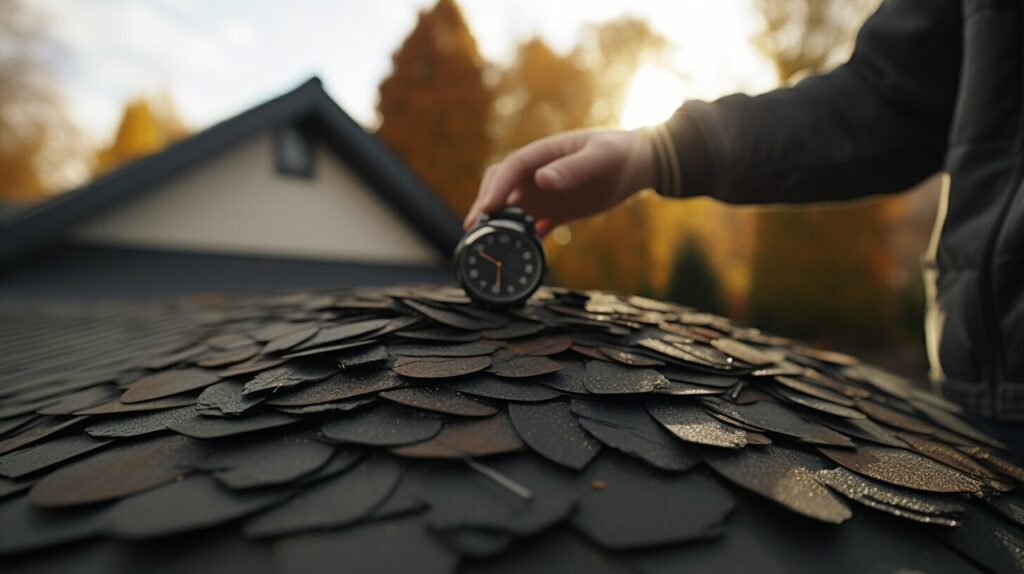
Overall, understanding the lifespan of your roofing materials is critical to ensure the safety and integrity of your home. By selecting high-quality shingles, following proper installation techniques, and practicing regular maintenance, you can prolong the longevity of your roof.
Quality Matters: Choosing the Right Shingles
If you want long-lasting shingles, quality matters. Choosing high-quality shingles from reputable manufacturers is crucial in ensuring shingle durability and longevity.
Do not be swayed by cheap options, as they often come with lower quality and may not withstand the test of time. Cheap shingles may be more prone to cracks, curling, and other forms of wear and tear, which can shorten their lifespan.
Investing in quality shingles is more cost-effective in the long run, as it means fewer repairs and replacements. You will save yourself the hassle and expense of premature repairs and replacements, which is not only time-consuming but also financially draining.
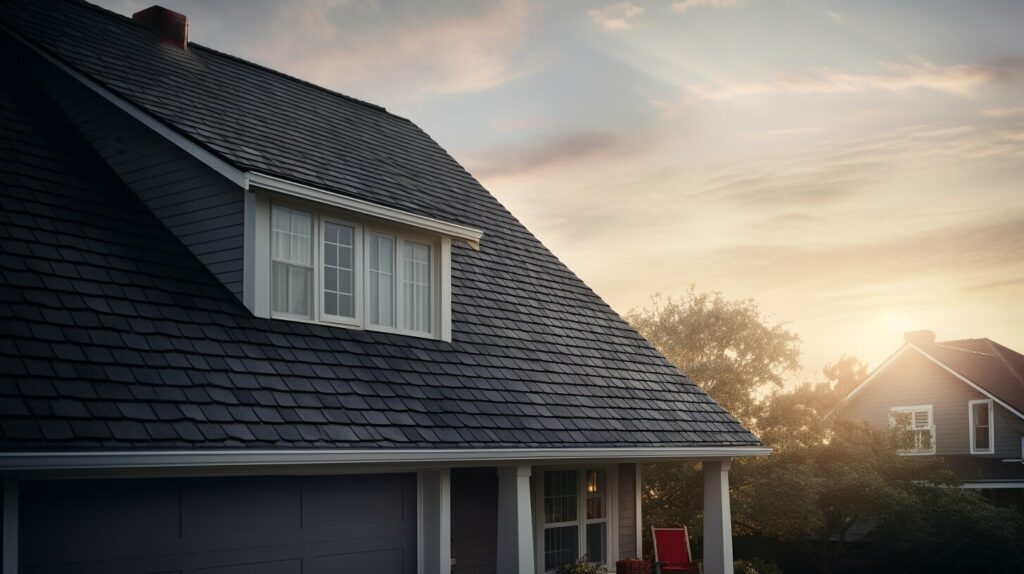
When choosing 40 year shingles, consider those that have high weather-resistance and impact resistance. These shingles can withstand harsh weather conditions, such as snowstorms, hail, and strong winds, which can cause damage to your roofing system.
Choosing shingles with a high-grade asphalt base can also contribute to prolonged shingle life. These shingles are more durable and resistant to wear and tear, which means they require less maintenance and last longer.
Factors Affecting Shingle Longevity
While shingles are designed to last for decades, various external factors can impact their lifespan. Understanding these factors can help you prolong your shingle’s life to the fullest extent.
Roofing Materials: The type of shingle you choose can have a significant impact on how long it lasts. Asphalt shingles, for example, have a lifespan of around 20 to 30 years, while metal roofs can last up to 50 years or more with proper maintenance. Synthetic shingles are also becoming a popular alternative to traditional roofing materials, offering enhanced durability and resale value.
Climate Conditions: Extreme weather conditions such as harsh sunlight, heavy rain, and strong winds can take a toll on your shingles over time. For example, prolonged exposure to high heat and sun can cause shingles to dry out and crack, while moisture can lead to mold and rot. If you live in an area prone to natural disasters, such as hurricanes or tornadoes, your roofing materials may be subjected to even more stress and damage.
Roofing Durability: The quality of your shingles and their durability can directly impact how long they last. Choosing high-quality shingles from a reputable manufacturer can go a long way in ensuring prolonged shingle life. Additionally, regularly inspecting and maintaining your roof can help identify any issues or damage early on, allowing you to address them before they worsen.

The best way to extend your shingle’s life is to understand these external factors and take appropriate measures to protect your roof. With proper maintenance and care, your shingles can last well beyond their expected lifespan.
Proper Installation and Maintenance
To maximize the durability and longevity of your shingles, proper installation and maintenance practices are crucial. Hiring a professional roofing contractor to install your shingles can help ensure that they are properly installed, minimizing the risk of premature wear and damage.
Regular maintenance practices, such as inspections, cleaning, and repairs, can also help keep your shingles in good condition. Inspect your roof annually for any signs of wear or damage, such as cracks, curled or missing shingles, or leaks. Clean your gutters regularly to prevent clogs and water damage, and ensure that your roof has proper ventilation to prevent moisture buildup.
If you do notice any signs of wear or damage, it’s important to address them promptly to prevent further damage and prolong the lifespan of your shingles. Ignoring small issues can lead to bigger and more costly problems down the road.
By following proper installation and maintenance practices, you can help extend the lifespan of your shingles and ensure that they continue to protect your home for years to come.
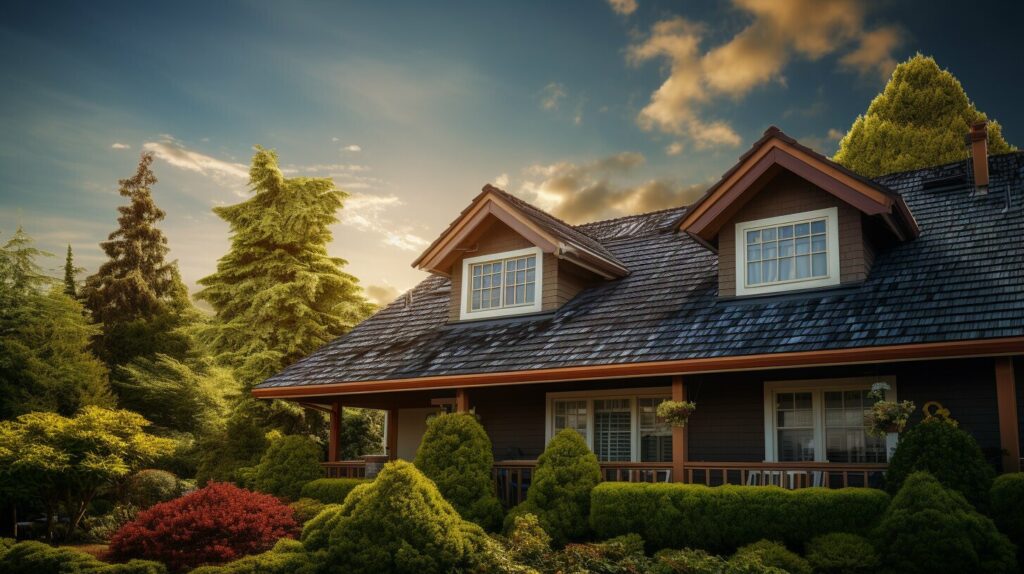
Signs of Shingle Wear and Aging
It’s important to be aware of the signs of wear and aging when it comes to your shingles. Over time, shingles can deteriorate due to exposure to the elements and other factors. Recognizing these signs can help you address issues before they become major problems.
One common sign of shingle wear is curling. This occurs when the edges of the shingles begin to lift up. Cracking is another sign that shingles are aging. It can occur due to exposure to the sun’s UV rays, changes in temperature, or other factors. Missing granules are another indication of shingle wear. Look for bald spots on the shingles where the granules have worn away.
Leaks can also be a sign of aging shingles. If you notice water stains on your ceiling or walls, it’s important to check your roof for leaks. Other signs of wear and aging include moss or algae growth, which can damage the shingles and encourage moisture retention.
If you notice any of these signs, it’s important to address the issue promptly. Ignoring small problems can lead to bigger, more expensive issues down the line. Regular inspections and maintenance can help you catch issues early on and extend the lifespan of your shingles.
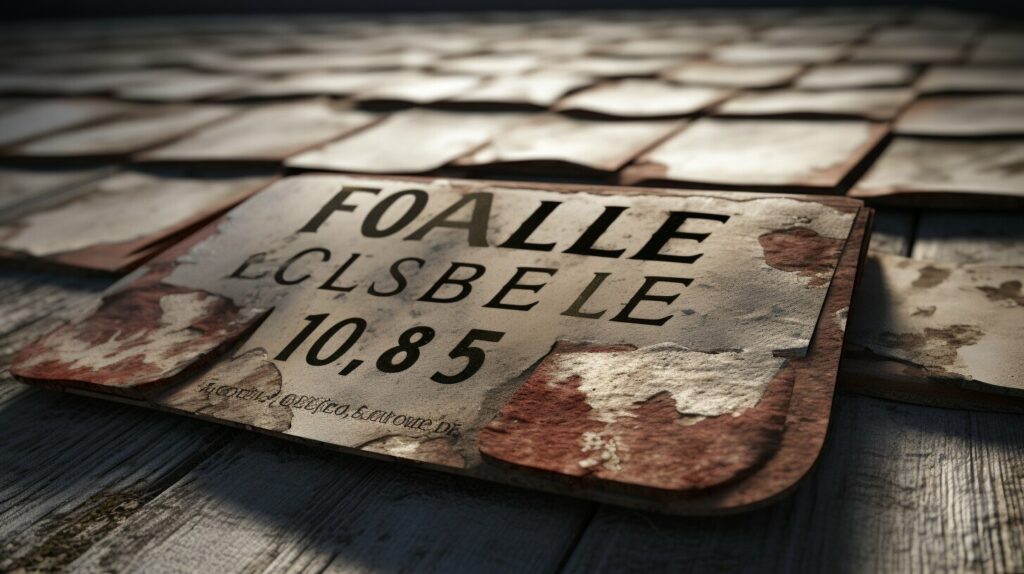
Remember, regular maintenance and inspections are key to prolonging the lifespan of your shingles. Don’t ignore what may seem like small issues, as they can quickly become major problems. By staying on top of maintenance and addressing issues promptly, you can maximize the lifespan of your roofing materials and protect your home.
Extending Shingle Lifespan
If you want your 40 year shingles to last as long as possible, there are several maintenance practices you should implement. These tips can help you prolong your shingle lifespan and avoid costly repairs or replacements.
- Regular Inspections: Inspect your roof regularly for any signs of wear or damage. Keep an eye out for curled or missing shingles, cracks, or leaks, and have them repaired promptly.
- Proper Ventilation: Ensure that your roof has adequate ventilation to prevent moisture buildup and excessive heat, which can shorten the lifespan of your shingles.
- Gutter Maintenance: Clean your gutters regularly to prevent debris buildup, which can cause water damage and premature shingle wear.
- Prompt Repairs: If you do notice any issues with your shingles, such as leaks or missing granules, have them repaired as soon as possible to prevent further damage.
By implementing these maintenance practices, you can help extend the lifespan of your 40 year shingles and ensure that they last as long as possible.
For more information on prolonging shingle life and selecting the right roofing materials for your home, continue reading.
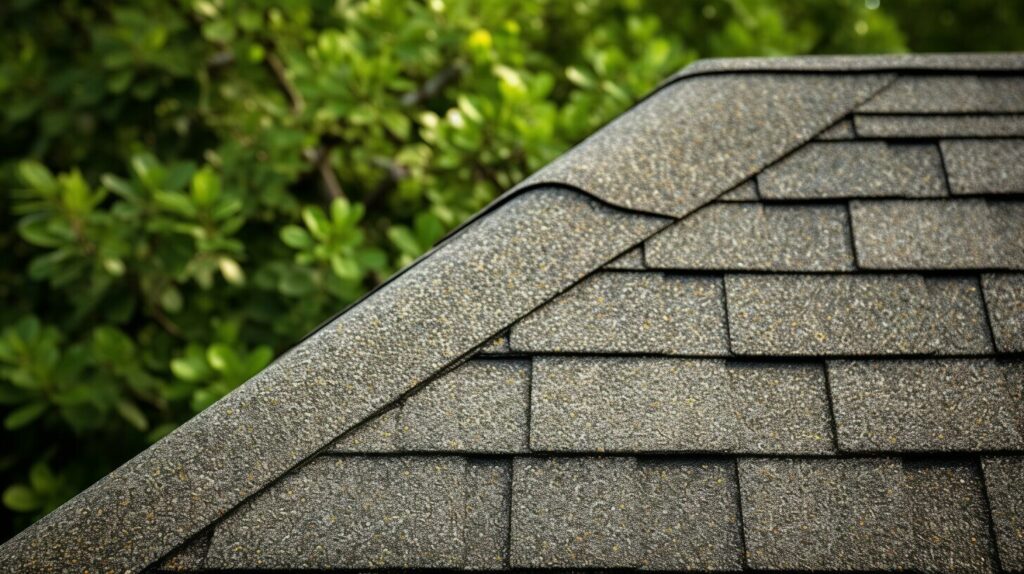
Comparing Shingle Lifespans
When it comes to roofing materials, lifespan is a crucial consideration. Different roofing materials have varying levels of durability and longevity. Understanding the lifespan of different shingles can help you make informed decisions about your roofing needs and budget.
| Roofing Material | Average Lifespan | Cost |
|---|---|---|
| Asphalt shingles | 20-25 years | Low |
| Metal shingles | 30-50 years | Medium to high |
| Wood shingles | 30-50 years | Medium to high |
| Synthetic shingles | 50+ years | High |
Asphalt shingles are the most common roofing material in the United States due to their affordability and ease of installation. However, they have a relatively short lifespan compared to other materials, averaging 20-25 years. Metal and wood shingles can last between 30-50 years, while synthetic shingles can last for 50+ years.
Keep in mind that the lifespan of shingles may vary based on factors such as maintenance practices and climate conditions. Regular maintenance and repairs can help prolong the lifespan of all shingle types. Consider your budget and long-term roofing needs when deciding which shingles to choose.
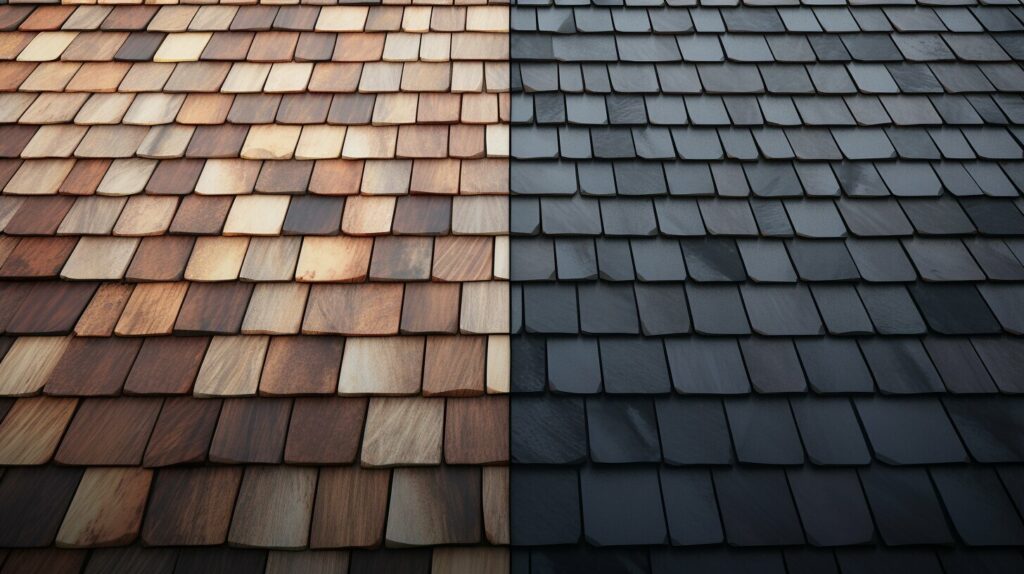
Conclusion
When it comes to the longevity of 40 year shingles, the answer isn’t as straightforward as the name suggests. While these shingles can last up to 40 years, their lifespan is heavily influenced by various factors such as roofing materials, maintenance practices, and external weather conditions.
To ensure your 40 year shingles last as long as possible, it’s crucial to invest in high-quality shingles from reputable manufacturers and have them installed by professional roofing contractors. Additionally, regular inspections, cleaning, and repairs can help identify and address issues early on, preventing further damage and prolonging the lifespan of your shingles.
By following these tips and making informed decisions about your roofing materials and maintenance practices, you can rest assured that your roof will provide reliable protection for your home for years to come.
FAQ
Q: Do 40 year shingles really last 40 years?
A: Shingle lifespan can vary depending on several factors such as the type of roofing materials used, maintenance practices, climate conditions, and manufacturing quality. While 40 year shingles are designed to have a longer lifespan compared to other shingles, the actual duration may be influenced by these factors.
Q: What factors affect the lifespan of shingles?
A: The lifespan of shingles can be influenced by factors such as the type of roofing materials used, maintenance practices, climate conditions, and manufacturing quality. Proper selection, installation, and regular maintenance can help maximize the durability and longevity of shingles.
Q: How can I choose the right shingles for longer durability?
A: Selecting high-quality shingles from reputable manufacturers is crucial in ensuring longer durability and extended lifespan. Look for shingles that are specifically designed for longevity and have positive reviews from customers and professionals.
Q: What external factors can affect shingle longevity?
A: External factors such as extreme heat, cold, and moisture can impact the lifespan of shingles. It is important to consider the climate conditions of your area and choose shingles that are suitable for the specific weather patterns to maximize longevity.
Q: How can proper installation and maintenance extend shingle lifespan?
A: Correct installation techniques and regular maintenance play a crucial role in maximizing the lifespan of shingles. Hiring professional installers and following manufacturer guidelines for installation, as well as performing regular inspections, cleaning, and repairs, can help extend the lifespan of shingles.
Q: What are the signs of shingle wear and aging?
A: Signs of shingle wear and aging include curling, cracking, missing granules, and leaks. If you notice any of these signs, it is important to promptly address them through repairs or replacement to prevent further damage to your roof.
Q: How can I extend the lifespan of 40 year shingles?
A: To extend the lifespan of 40 year shingles, it is recommended to perform regular inspections, ensure proper ventilation, maintain clean gutters, and promptly address any issues or repairs that arise. Following these maintenance practices can help maximize the longevity of your shingles.
Q: How do different types of roofing materials compare in terms of lifespan?
A: Different types of roofing materials, such as asphalt, metal, wood, and synthetic shingles, have varying lifespans. Comparisons between these materials can help homeowners make informed decisions based on their desired durability and longevity.